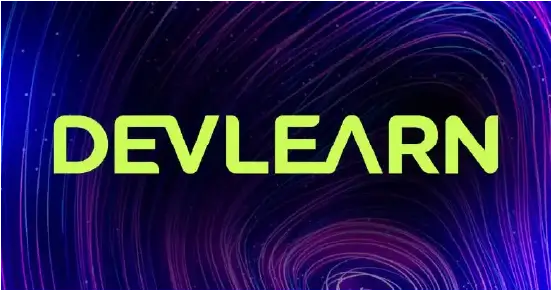Your cart is currently empty!

Maximize L&D’s Value Proposition with Your Vendor Strategy

One of the most important jobs of learning leadership is deciding on vendor strategy; specifically, finding the balance between using internal and external talent to develop online training resources. Basing decisions on just your instincts and experience could lead you toward a value-killing approach. Quality data, on the other hand, can show you the way to a more certain value-building solution.
I’m going to share some lessons learned based on four years’ worth of data the L&D department at Rogers Communications has collected on every project (452 of them) we delivered between January 2017 and December 2020. The data includes the time each designer spent developing each asset and correlates it with the asset’s length, measured in learning hours produced (also known as LHP or “seat time”).
Back in 2016, our strategy was simple: Hire design and development vendors to do most of the innovative work that came to our department, especially if it required complex digital technologies. We also engaged vendors to deal with demand overflow, helping us cope when we had too much work to deliver at once.
The logic, we thought, was solid; vendors can take care of complicated work that would require hardware, software, and talent we didn’t have and that was expensive to acquire. They could also give us a hand when “time to market” was more important than cost considerations. We were happy to focus our internal team on “maximizing” its productivity through assets like instructor-led material and basic forms of web-based training (without sophisticated interactivity).
In our minds, we were optimizing value by creating a lot of assets and reaping the benefits of specialization in a tenured team, able to churn assets fast. To us, it was a no-brainer; it fit neatly into one of those textbook Economics 101 case studies.
Well, we were wrong. If we had continued down that path, we would have prevented our team from creating a total of $17.7 million in gross value (net value of $4.3 million) in those four years.
Paradigm change
The discovery that we had enormous untapped potential happened almost accidentally. While pulling our productivity numbers for 2018, we expected our output (expressed in Learning Hours Produced or LHP) to be lower than it was in 2017, due to the adoption of a new content management system that the team was still getting used to. That was indeed the case: We went from 719 LHP to 618 LHP (a decline of 14%). But when we valued the production at market prices, we discovered that its value was 43% more than in 2017. Initially, it didn’t make sense. A decline of 14% in output producing a 43% increase in value wasn’t logical on the surface.
But when we started analyzing the data, everything came together. To increase employee engagement, in late 2017 and 2018 we started giving some projects that we would have traditionally given to our vendors to some of our designers instead. We thought it would be good for the team’s engagement and development, even if it ended up being a bit more expensive. It was an investment in our people with a cost we were willing to absorb.
The huge surprise was that the real benefits of this approach went way beyond our expectations, and there was also a solid financial case to do this. Instead of an additional cost, we found a return on investment that was considerably higher than that of traditional assets.
The new approach
After this discovery, we focused our efforts on accelerating the adoption of new technologies and approaches to learning. We integrated new talent into the learning function, including non-traditional roles like full-stack and front-end developers, UX designers, and web instructional developers. We also initiated an ambitious upskilling program to enable our existing talent to take on new challenges like the creation of advanced web-based training, video, animation, podcasting, microsite and learning platform development, microlearning assets, digital gamification, and extended reality, to name a few.
Our vendor strategy has evolved, too. We still use vendor support for instances when the amount of work required surpasses our capacity, but the projects we pick for them are different. Their work is generally simpler, like standard leader-led training and basic web-based training.
Today, most of the advanced work with sophisticated technology or innovative learning approaches (involving the latest in learning science) stays in-house. The exceptions to this rule are rare cases when the technology is so experimental and so expensive that we want to test it first, before deciding if we’d adopt it or not.
Is there a rule of thumb?
The reality of every organization is different but based on our experience and measurements, there are some findings that may help inform your future design and development vendor strategy decisions:
- Setting up a system to measure your productivity in a reliable way is worth the effort. It will enable you to make objective decisions based on data instead of subjective evaluations based on your, or your team’s gut feelings. There is ROI in knowing your real ROI.
- Even when offshore vendors offer much lower fees, there are many hidden costs that, when made explicit, make this approach more expensive instead of more efficient. We often ended up doing what we wanted to avoid: assigning an ID resource to these sorts of projects. The time this person spent in quality control and resolving misunderstandings could have been used in just producing the asset directly.
- This may sound silly but it’s important: If you are asked to produce an asset to teach transferable, generic skills (for example “emotional intelligence”), make sure you look for off-the-shelf options in the market. Chances are, it’s more expensive to reinvent the wheel internally than to buy an already finished and tested product.
- For large organizations, it makes sense to have a learning department with production capabilities—which means having talent like instructional designers who produce courseware instead of just managers to oversee the process of creating and delivering those assets.
- If your goal is minimizing cost, the best approach is having your own talent and maximizing their value contribution through technologically advanced work.
- It makes sense from the financial and people management points of view to develop your L&D team so they explore, learn, and use new technologies, tools, and solutions. To achieve this, you may want a mix of internal talent and vendors. In some instances, vendors can oxygenate your organization with new approaches and insert a healthy competition dynamic that will motivate your department to evolve and stay on top of its game. Once you have tested these new approaches, you can adopt them and increase your internal portfolio. This has the advantage of minimizing the risk of buying expensive hardware and software or hiring talent that may end up being irrelevant.
When vendors are used strategically they can improve your bottom line and value contribution to your organization, but the bigger impact may come from deploying and upskilling your own talent. The only way to know it with certainty is collecting quality data from your learning organization.
Explore leadership issues with your peers
Explore the strategies and skills required to navigate the needs of today’s ever-changing workplace with your learning leadership peers. Join the Learning Leaders Alliance, a vendor-neutral global community for learning leaders who want to stay ahead of the curve and for aspiring leaders wanting to build their skillsets.
The Learning Guild’s Alliance Membership package includes access to exclusive digital events and content curated for today’s modern learning leader, as well as opportunities to attend in-person learning leadership events held around the globe.






